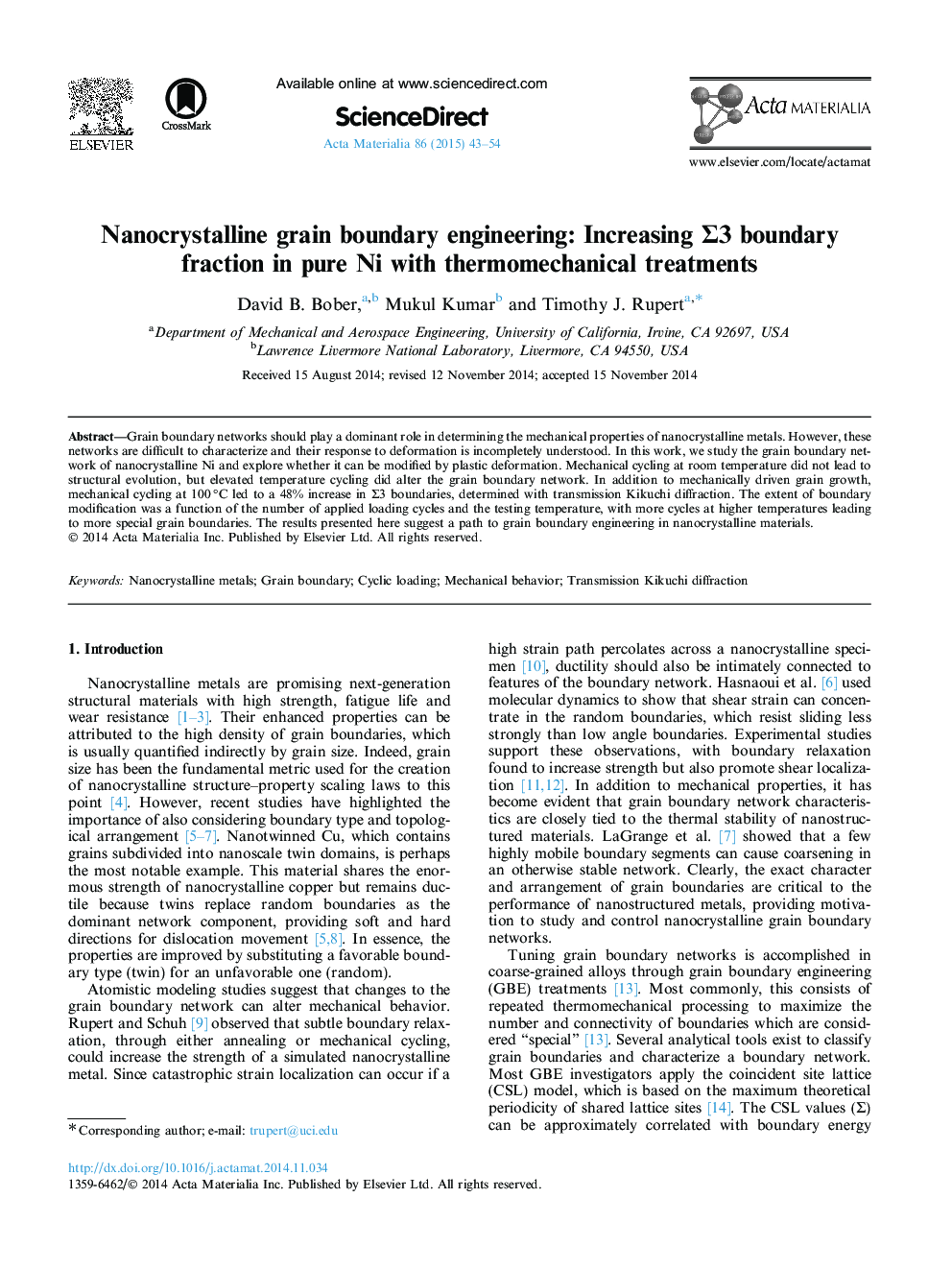| Article ID | Journal | Published Year | Pages | File Type |
|---|---|---|---|---|
| 7880621 | Acta Materialia | 2015 | 12 Pages |
Abstract
Grain boundary networks should play a dominant role in determining the mechanical properties of nanocrystalline metals. However, these networks are difficult to characterize and their response to deformation is incompletely understood. In this work, we study the grain boundary network of nanocrystalline Ni and explore whether it can be modified by plastic deformation. Mechanical cycling at room temperature did not lead to structural evolution, but elevated temperature cycling did alter the grain boundary network. In addition to mechanically driven grain growth, mechanical cycling at 100 °C led to a 48% increase in Σ3 boundaries, determined with transmission Kikuchi diffraction. The extent of boundary modification was a function of the number of applied loading cycles and the testing temperature, with more cycles at higher temperatures leading to more special grain boundaries. The results presented here suggest a path to grain boundary engineering in nanocrystalline materials.
Keywords
Related Topics
Physical Sciences and Engineering
Materials Science
Ceramics and Composites
Authors
David B. Bober, Mukul Kumar, Timothy J. Rupert,
